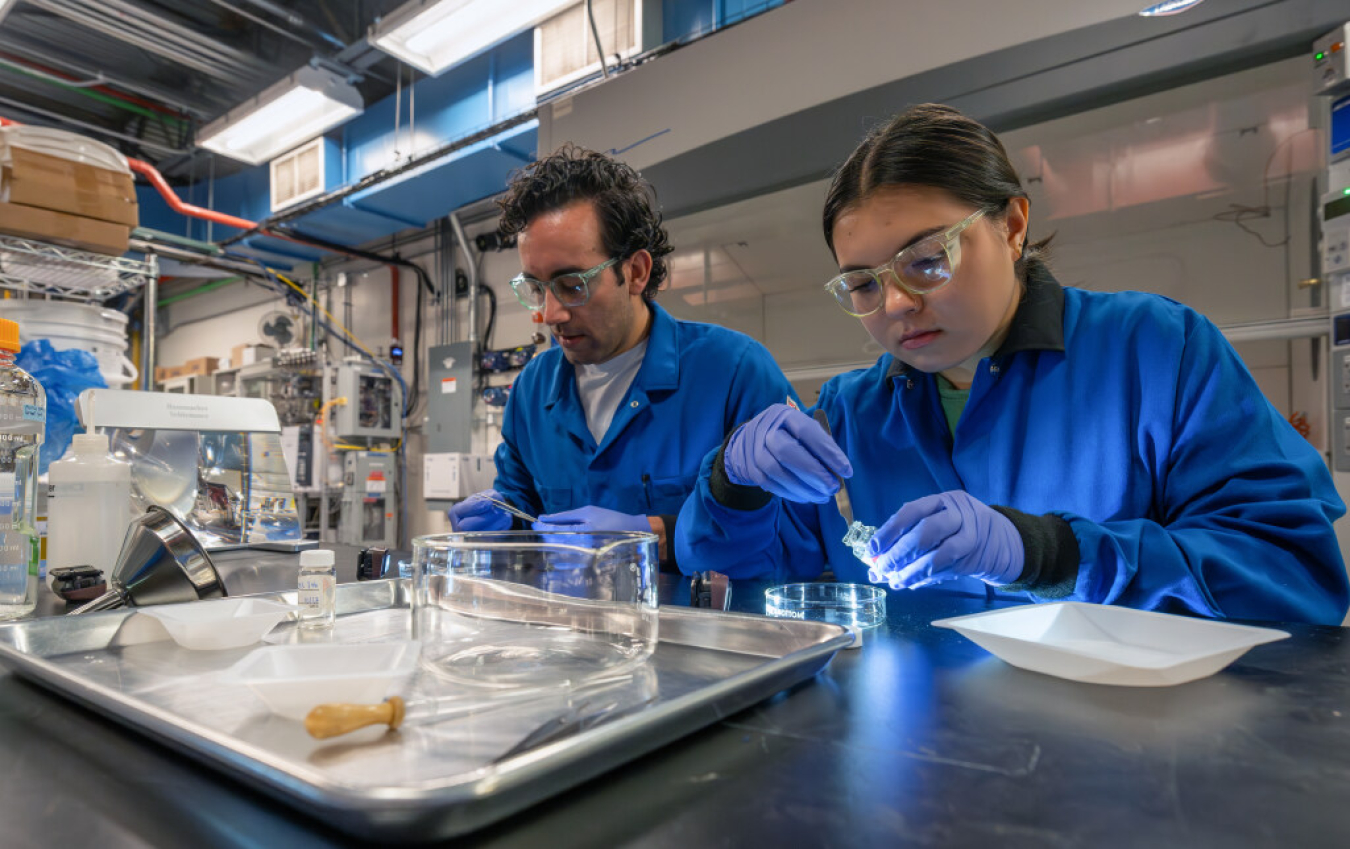In celebration of Earth Day, the U.S. Department of Energy (DOE) Bioenergy Technologies Office (BETO) is highlighting some of the exciting and innovative work DOE and our national laboratories are doing to protect our planet. Researchers from DOE’s Waterborne Plastics Assessment and Collection Technologies (WaterPACT) project and Bio-Optimized Technologies to keep Thermoplastics out of Landfills and the Environment (BOTTLE™) consortium are on mission to do just that!
April 22, 2024The (In)Visible Plastic Pollution Problem – Department of Energy Project to Quantify and Reduce Plastic Waste in U.S. Rivers

NREL researchers Ali Chamas (left) and Clarissa Lincoln (right) are working on the WaterPACT project to analyze plastic pollution collected from U.S. rivers. Photo by Josh Bauer, NREL.
In celebration of Earth Day, the U.S. Department of Energy (DOE) Bioenergy Technologies Office (BETO) is highlighting some of the exciting and innovative work DOE and our national laboratories are doing to protect our planet. Researchers from DOE’s Waterborne Plastics Assessment and Collection Technologies (WaterPACT) project and Bio-Optimized Technologies to keep Thermoplastics out of Landfills and the Environment (BOTTLE™) consortium are on mission to do just that!
Rivers are nature’s highways, supplying nearby areas with life-sustaining water, nutrients, and biodiversity on their journeys to larger bodies of water. These days, however, they are far from pristine. A harmful substance is making its way down rivers and into oceans around the world: plastic debris. In the U.S. alone, over a million tons of plastic debris makes its way to ocean-bound rivers, creeks, and sewer drains every year.
Led by the National Renewable Energy Laboratory (NREL), the researchers from WaterPACT are developing renewable-energy-powered technologies to detect, quantify, and collect plastic from U.S. waterways. They are analyzing plastic and water samples collected near the mouths of the Columbia, Delaware, Los Angeles, and Mississippi Rivers to determine the scale of the waterborne plastic pollution problem.
With collaboration from DOE’s BOTTLE consortium, the Pacific Northwest National Laboratory and the Environmental Molecular Sciences Laboratory, the WaterPACT project aims to reduce the volume of plastic currently entering the ocean annually via U.S. waterways by more than half by 2040. The BOTTLE consortium conducts high-impact research and development to change the way we recycle plastics, and researchers at BOTTLE are working to reclaim the valuable resources in existing plastic waste and redesign plastics to improve their recyclability.
Read more about this innovative plastics research.
WaterPACT was initially funded by a small grant from BETO and is currently funded in part by DOE’s Water Power Technologies Office. The BOTTLE consortium conducts high-impact research and development to change the way we recycle plastics and is funded by DOE’s Advanced Materials & Manufacturing Technologies Office and BETO. Learn more about the DOE’s National Laboratories here.

